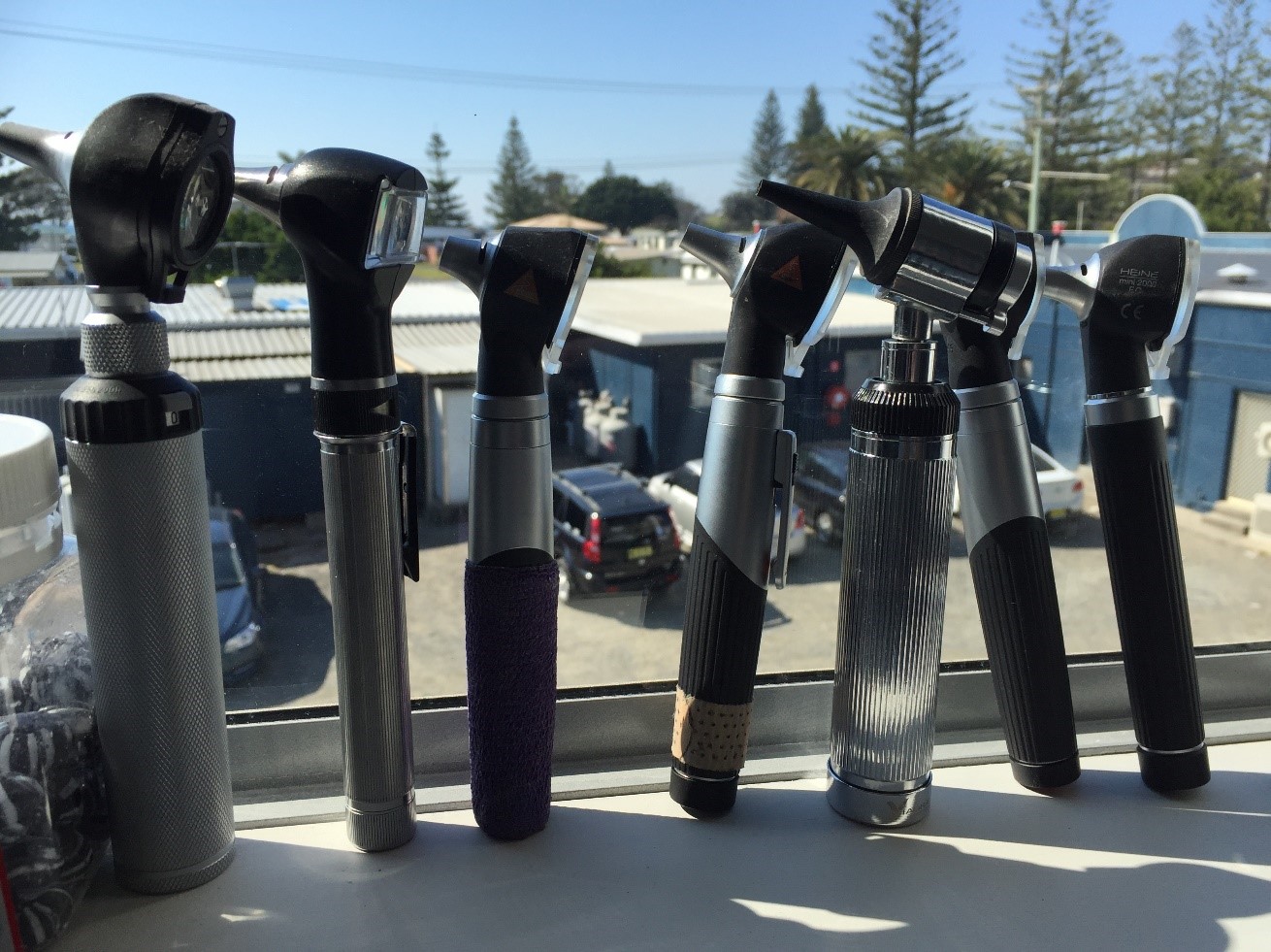Mastering the auriscope

TLA (middle) and colleagues admiring the view
People associated the stethoscope with Medicine, so my stethoscope was an early gift from a proud family. I had to buy my auriscope and my reflex hammer.
My first auriscope was special and it took a lot of practice to learn how to use it effectively. Whereas even lay people knew how to wield a stethoscope, the auriscope was a real novelty and a challenge.
There was never a better example of the concept of literally, “the light at the end of the tunnel”.
The manipulation of the ear to allow the painless insertion of an ear speculum attached to the end of the auriscope was hard enough but then ensuring you could actually see an eardrum was a world away! When finally, all appeared clear, I felt a real sense of achievement. But that was with normal adults and like so much in our lives, there were further refinements to come. I started to deal with sick and uncooperative patients.
I learned how to secure a sick and restless child in their parent’s arms and then had 10 -15 seconds to get a clear look at the tympanic membrane and otic canal of each ear. I remembered how similar this was Rudyard Kipling’s description of Kim’s Game, a memory game in which a variety of objects are placed on a tray and observed for a short time, with players then trying to remember as much detail as possible. The military use KIM as a mnemonic for Keep In Memory. I found I could take a mental snapshot of the ear and examine it in detail in my imagination. Practice was invaluable.
The first auriscopes were big and clumsy, either tethered to the wall with an ophthalmoscope or handheld with 2 D size batteries in the handle. As technology improved, the auriscope and the batteries that powered them got progressively smaller.
We started off with a pen torch as well – a valued prize from pharmaceutical reps. Gradually as the auriscope became smaller, it replaced the torch. It was also useful to transilluminate lumps to see if they held fluid or were solid, to transilluminate digits to find splinters or other foreign bodies and as a primitive dermatoscope, and to identify ticks.
TLA – The Little Auriscope
When you use an object like an auriscope so often; when it is hard to use and has its quirks and peculiarities it is easy to assign it a personality - to anthropomorphise it.
I belonged to a Facebook site for GPs. Sometimes discussions can get slightly heated and there is a need for a completely different sort of input to act as a leveller or distraction like cat photos or memes. At one point I put a photo of my auriscope in there on the spur of the moment, thinking it would be ignored – but it tapped a nerve. Perhaps others had assigned their auriscope a personality as well. Colleagues started commenting, and then others joined in to the point of ‘what’s the auriscope up to?’
When I subsequently went to a conference, I took him with me. Some conference attendees asked if I could take photos of them with him. He was evolving to become a media sensation. I wondered how long it would last. But it kept going – I’ve taken him on overseas trips and reported back from the trenches in various places. It’s a harmless diversion for when the debate gets too serious, or people get hot under the collar about their issue – he can be a distraction.
His name is TLA – The Little Auriscope. A Three Letter Acronym. He is about 10 years old. Sits on my desk. I’ve learned to reverse the batteries while travelling so they don’t get flattened.
When he hasn’t been seen for a while, people ask what he’s up to. I’m happy to oblige. He comes to the college conference every year – he’s been to the last three.
What do I post? Once I lined up three of them and called it an auriscope convention. Then at a medical museum, I had him next to an ancient looking one and titled it “researching family history”.
Funny how you toss something out and think it’s a one off thing – but it flies. When I put a photo up after an absence, new members ask ‘what’s this?’ – then old hands jump in and it starts off again.
I would have owned ten auriscopes in my career. You can afford to have a couple around because they tend to go walking – you need one in the nurse’s room, one in the doctor’s bag for a house call and at home if a visitor asks if you can look in their kid’s ears.
By A/Prof John Kramer OAM - with contribution from A/Prof Chris Hogan based on an interview with the author